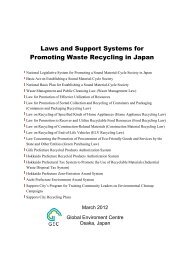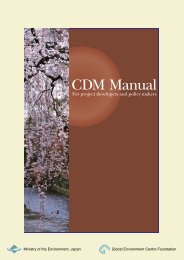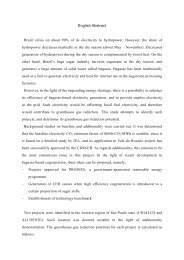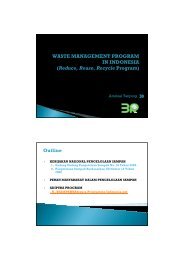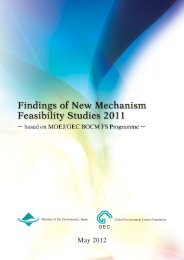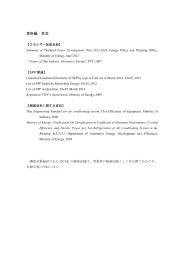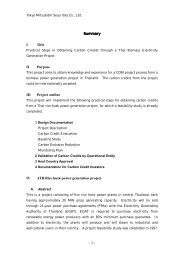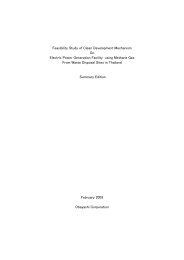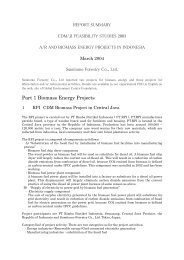PDF File - GEC
PDF File - GEC
PDF File - GEC
Create successful ePaper yourself
Turn your PDF publications into a flip-book with our unique Google optimized e-Paper software.
pp. 1.18-1.19, Intergovermental Panel on Climate Change (IPCC), 2006.<br />
(4) Global Warming Potential (GWP)<br />
Under the Kyoto Protocol, global warming potentials should be those provided by the IPCC Second<br />
Assessment Report (1996) based on the effects of the GHGs over a 100-year time horizon.<br />
Global Warming Potential (GWP) values<br />
CO 2 - Carbon dioxide 1<br />
CH 4 - Methane 21<br />
N 2 O - Nitrous Oxide 310<br />
HFCs - Hydrofluorocarbons 140 – 11,700<br />
PFCs - Perfluorocarbons 6,500 – 9,200<br />
SF 6 - Sulphur hexafluoride 23,900<br />
Source: GWP for a 100 year time horizon in Table 4, p. 22, Climate Change<br />
1995: Science of Climate Change, Intergovernmental Panel on Climate<br />
Change (IPCC), 1996.<br />
In section B.6.2, “Data and parameters that are available at validation”, project participants should<br />
present information on the data and parameters available at validation using a table form provided<br />
in the CDM-PDD format. Detailed information should be included in Annex 3 “Baseline information”.<br />
Only following data should be included:<br />
(a) Determined only once and remains fixed throughout the crediting period,<br />
(b) Available at the time of validation, and<br />
(c) Not monitored throughout the crediting period.<br />
And following should not be included:<br />
(a) Data that is calculated with equations provided in the methodology, or<br />
(b) Default values specified in the methodology.<br />
In section B.6.3, “Ex-ante calculation of emission reductions”, project participants are to document<br />
how each equation is applied, in a manner that enables the reader to trace the calculation. The results<br />
of emission reduction calculation for the crediting period should be summarized in section B.6.4.,<br />
using the table provided in the CDM-PDD format.<br />
3.3 Application of a monitoring methodology<br />
PDD Section B.7 describes the application of the monitoring methodology and the monitoring<br />
plan, the results of which are subject to verification by the DOE and used for the calculation of the<br />
emission reductions achieved through the project activity. Since the difference between the baseline<br />
emissions and actual project emissions is to be claimed as CERs, it is very important to develop a<br />
detailed and realistic monitoring plan.<br />
The monitoring methodology specifies which parameters and data are to be monitored. Project<br />
participants should provide information about how such parameters and data are collected during<br />
monitoring for the project activity. It is important that project participants strictly follow the<br />
monitoring procedures set out in the monitoring methodology, including recording frequency and<br />
measurement methods, if specified. If project participants are not able to follow all the requirements<br />
strictly, the differences should be explained and justified. For each data and parameter, a table should<br />
be filled out that includes information such as:<br />
49




